Limber PinePinus flexilis landscapeconiferdrought tolerantbonsaicold tolerantevergreendeer resistantwestern nativeornamentalpots
Height: 30' average mature height Hardiness Zones: 4-8 Find my zone Aspect: half shade to full sun
This plant can't be shipped to California, Hawaii, Montana
Size Availability
Out of season.
Our main crop of most plants is available starting in late fall.
Additional batches of plugs and quarts are usually added in May.
Many of our plants are propagated in limited quantities and can sell out quickly when posted, get on the notification list below so you don't miss out. Add your email to be notified as soon as we have them back in stock:
This does NOT subscribe your email to any mailing lists, our system will only send an inventory notification message.
The Limber Pine is an extremely tough species found through the Rocky Mountains from New Mexico to Canada where it can survive on mountain peaks at higher elevations than other tree species can grow. It is similar to the closely related Whitebark Pine (
Pinus albicaulis
) and also has a similar habit to the Bristlecone Pines which are more distantly related. The Limber Pine is an excellent choice for bonsai because of its short needles, thick trunk, and dense branches. It also develops far more branches near the base of the tree than most other conifer species.
Trees develop thick foliage and an upright habit when grown under normal low elevation conditions, but at high elevations Limber Pines develop twisted, gnarled forms from extreme wind and heavy snow loads. Each tree is very unique in its appearance and often develops a trunk several feet in diameter even though the tree only reaches five or six feet tall. Bonsai enthusiasts often recreate this contorted and flattened habit with this species but it can also be done on a larger scale in the landscape with regular and careful pruning.
Like other high elevation pines, the Limber Pine prefers well drained soil and full sun, although some shade is okay. If you don't have well drained soil try creating a soil mound four to five feet wide and three feet tall and plant the tree on top of the mound as this will provide the roots with extra drainage.
Bristlecone Pines
There are three true Bristlecone Pine species, the Great Basin Bristlecone, Rocky Mountain Bristlecone, and Foxtail pines as well as two other more distantly related species: Whitebark and Limber Pines. All five of these species are typically found at extreme elevations where they are tough, long-lived trees that grow slowly into impressive gnarled specimens in locations where no other trees can survive. These trees can survive for thousands of years under harsh mountaintop conditions and all five species have at least one individual that is estimated to be over 3,000 years old. However, despite their longevity under such harsh conditions, these types of trees can be difficult to grow in lowland conditions where high heat and humidity, as well as nutrient-rich and moist soils, are unfamiliar and unwelcome.
The only species that seems easy to grow in landscapes is the
Limber Pine
as it seems to be much more adaptive to heat and soils that aren't made entirely of deep gravel and boulders. When growing the other species in containers (such as for bonsai), we recommend growing them in a mixture that is primarily made up of volcanic pumice or perlite. This material is free draining but holds onto more moisture than pure gravel. However, the trees will still need to be watered somewhat frequently to prevent the roots from drying out entirely since these trees are used to having their roots 30-100 feet deep.
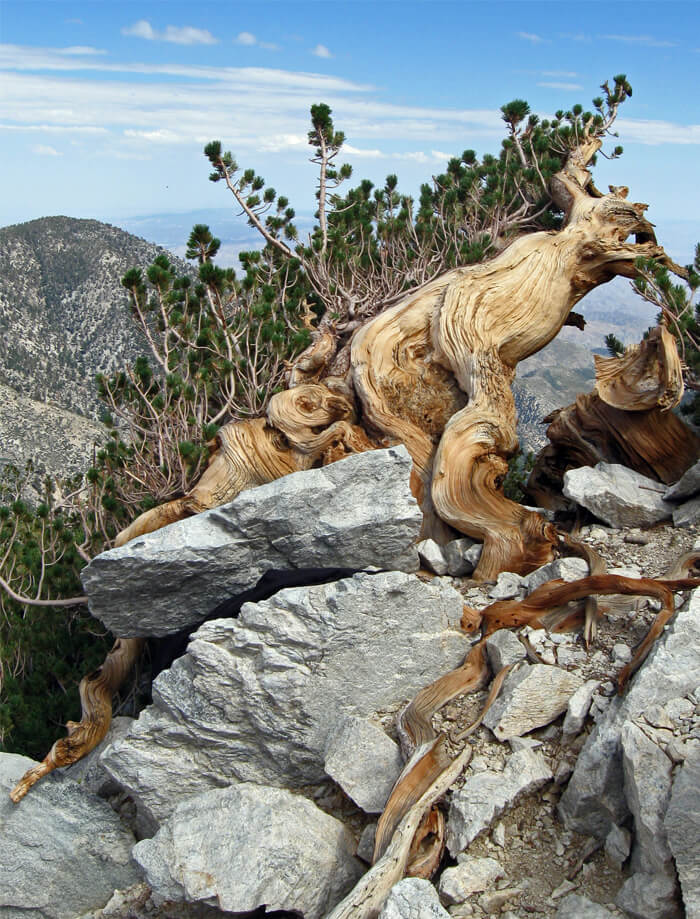
A twisted and flattened Limber Pine growing on a rocky ridge with no soil
Source: Commons
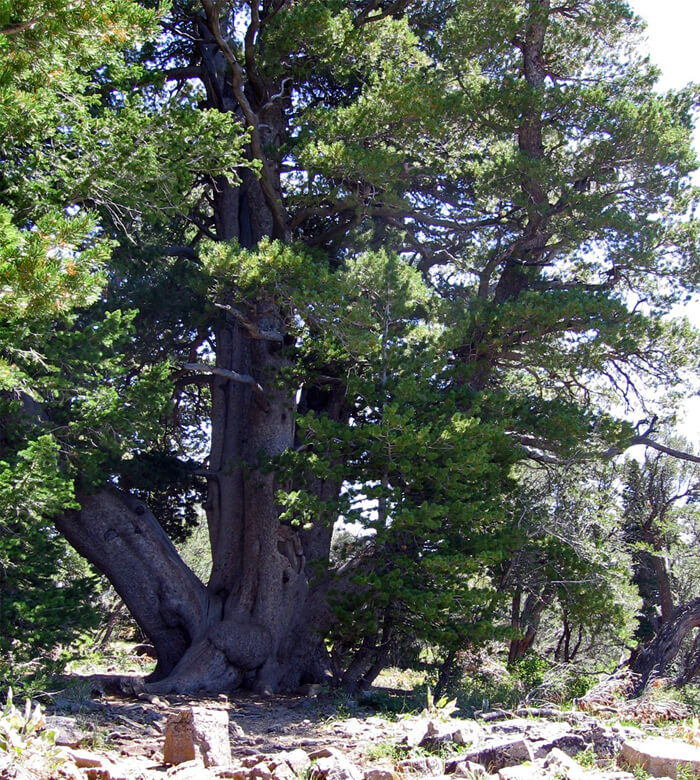
A large Limber Pine with multiple trunks
Source: Commons
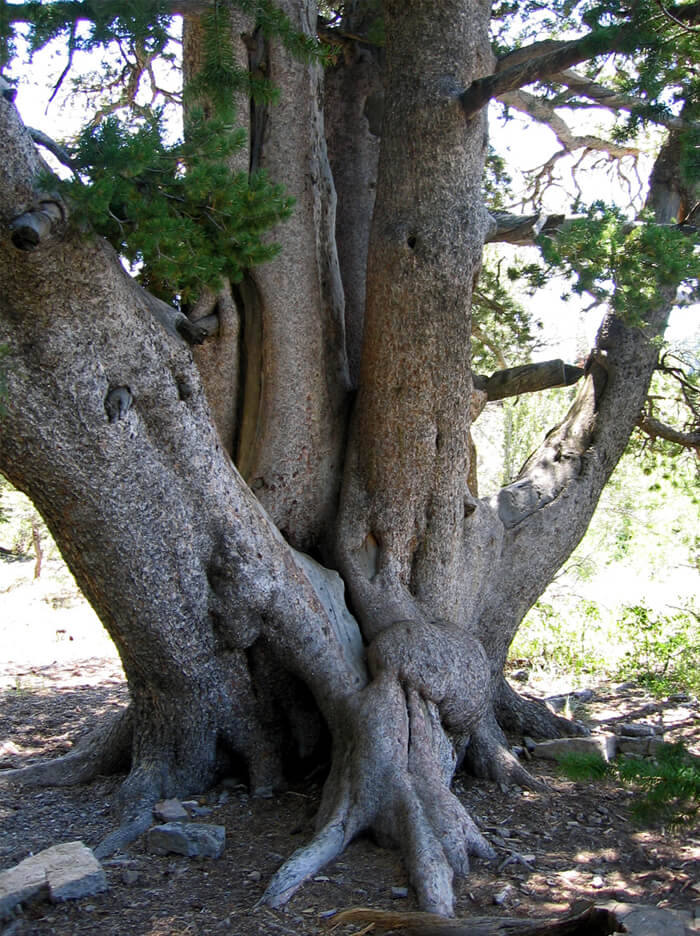
The trunk develops a gnarled appearance as trees age
Source: Commons
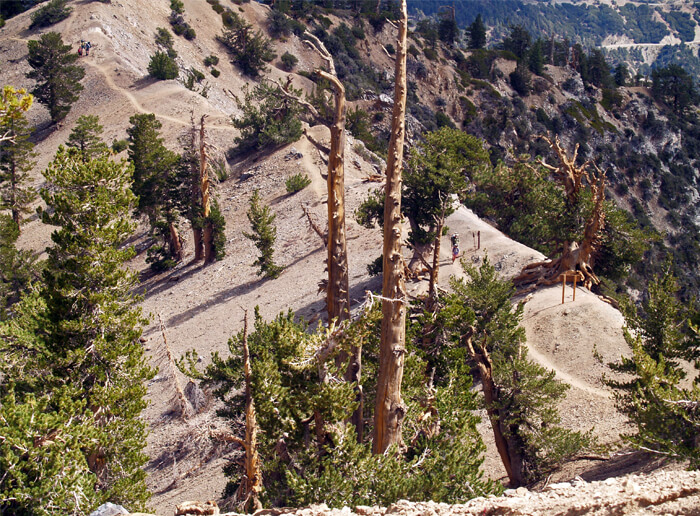
Limber Pines growing on a high elevation ridge where no other tree species can survive
Source: Commons
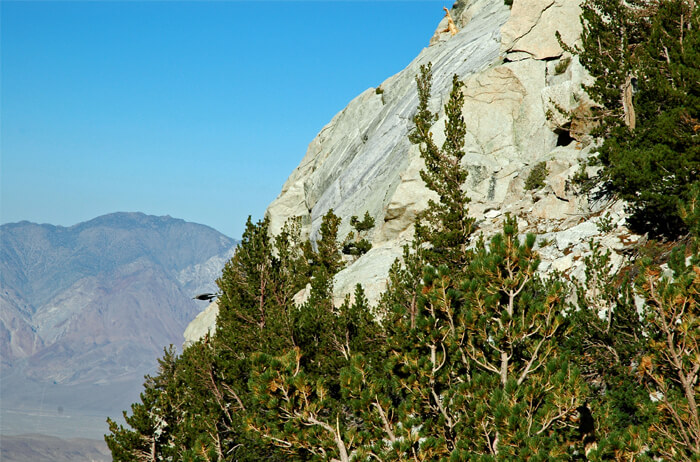
Limber Pines growing on the edge of a cliff
Source: Commons

These Limber Pines are the only plant able to grow in this desolate soil
Source: Commons

Limber Pines growing just above the tree line of other conifer species
Source: Commons
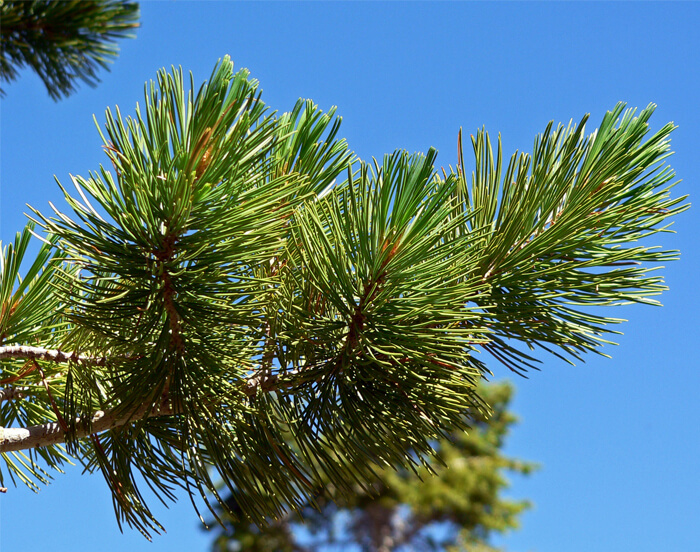
Close up of the short needles
Source: Commons
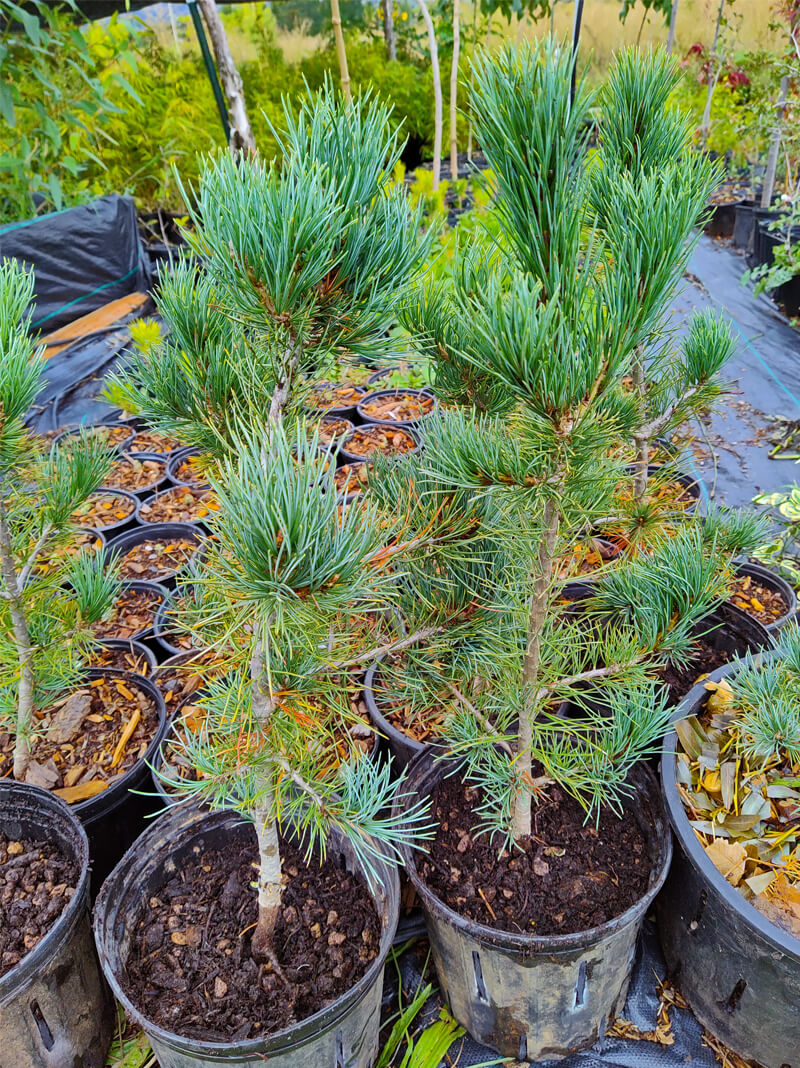
Pinus flexilis - Limber Pine in a two gallon container

A Limber Pine in a more protected location where it is allowed to grow upright
Source: Commons
Packing Plants For ShippingMost of our plants are shipped bare root while they are dormant from late November through April and ship via the U.S. Postal Service. Bamboo plants can be shipped in their containers year-round by UPS.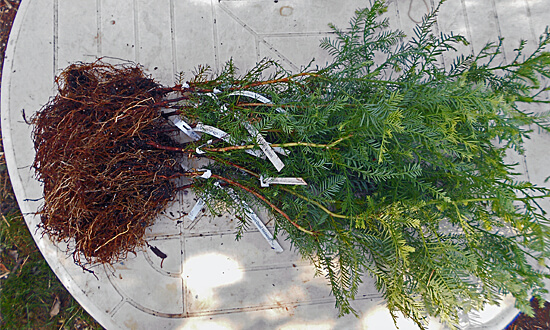 Bare root plants are soaked and wrapped together in bundles. ictured are 10x 24 inch tall Coast Redwoods. 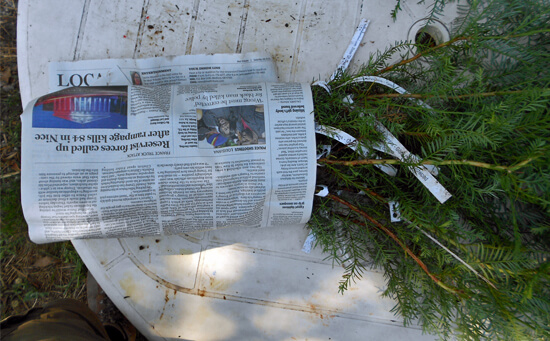 The bundled plants are wrapped in paper and labeled by variety. 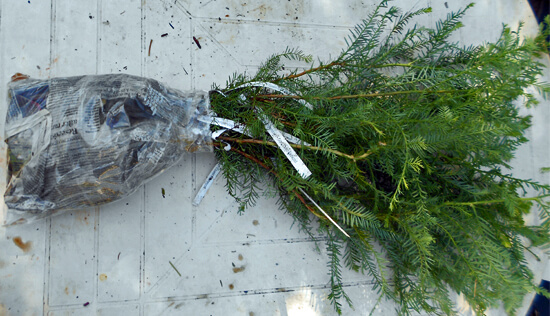 The bundle is wetted and bagged. 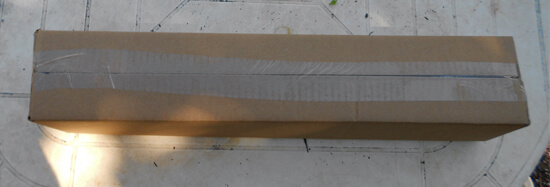 Bundles of plants are secured in long boxes. Pruning and Plant SizesWe prune both the tops and the roots of our plants at least once per year while they are growing in our nursery to ensure they develop a strong, dense form. Regular annual pruning goes a long way to ensure a healthy branching structure and this is often a missed step in many nurseries. Pruning a plant back hard after it has been neglected pruning-wise often results in an irregular branch habit or multiple leaders so we prune early and regularly instead. We also prune the roots of our plants while they are dormant which causes them to produce a much more branched structure and helps to elimate tangled masses that hinder future development. Plants that have been root pruned establish themselves much more quickly than root bound plants. Generally, hardwood plants will be pruned in the winter and conifers will be pruned in the summer.Before shipping plants we prune the tops and roots one last time. Conifers will usually have very little pruning except to balance out long branches. Shrubs are usually pruned to around 1-2 feet tall to encourage low branch development and small to medium sized trees are usually pruned to around 36-40 inches. Pruning trees at this height encourages dominant branches to begin forming around 3 feet from the ground which typically looks the best in most situations. However, if you want a tree to have branching start higher (some city codes require trees to not branch below 4 feet) we have longer boxes available. To request taller trees please contact us at least three days before your ship date. Depending on your location and the shipping routes there may be a fee for oversize package handling (usually about $15 for a 60 inch box). 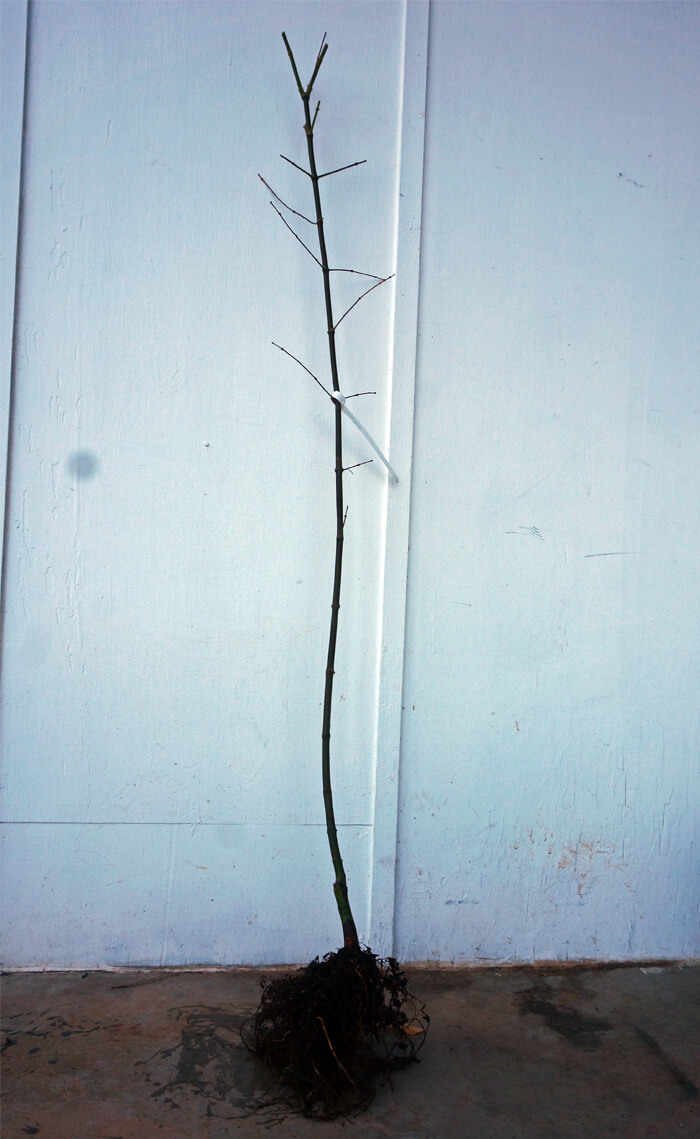 Tall trees (Oaks, Ginkgo, large Maples, etc.) are pruned to 40 inches to encourage crown development from about 36 inches and up 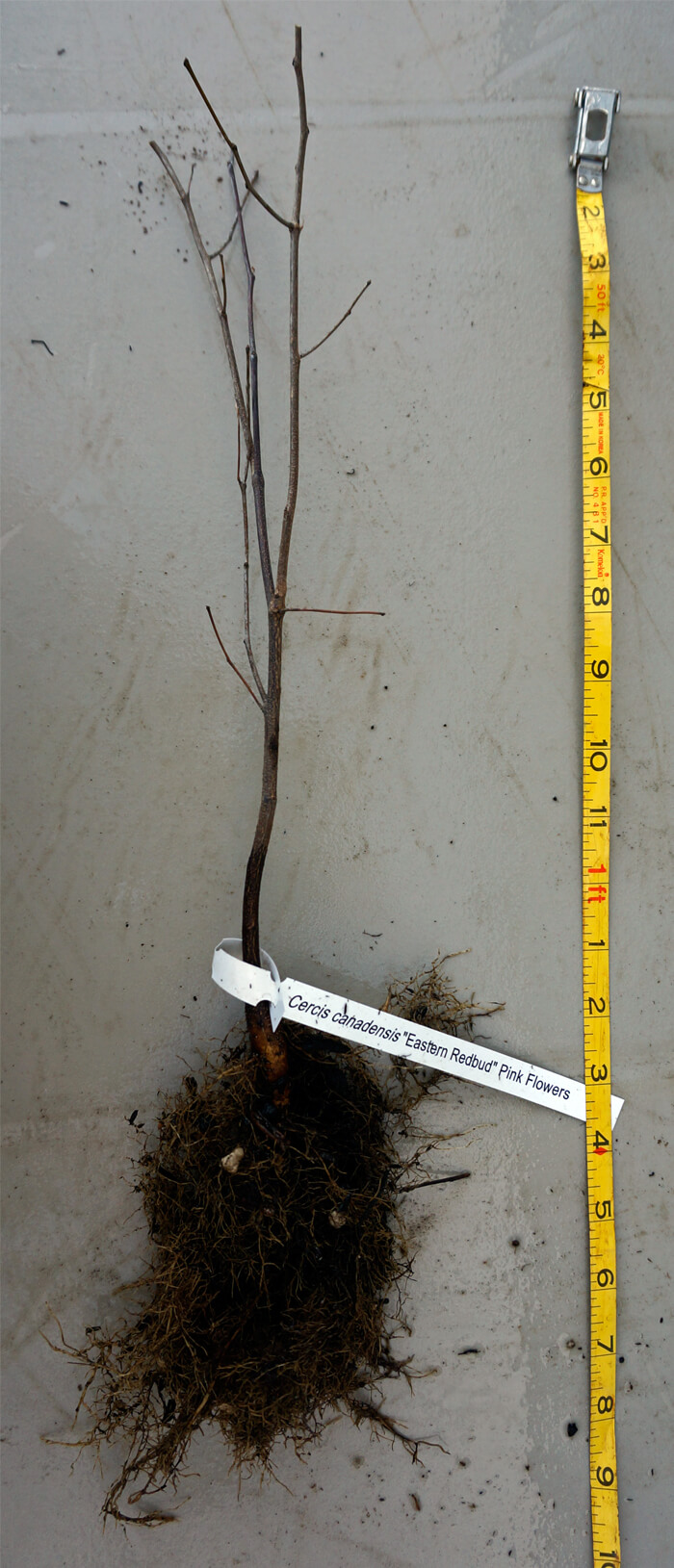 Small and medium trees (short Maples, Redbuds, Stewartia, etc.) are pruned 10-20 inches above the prune line from last year 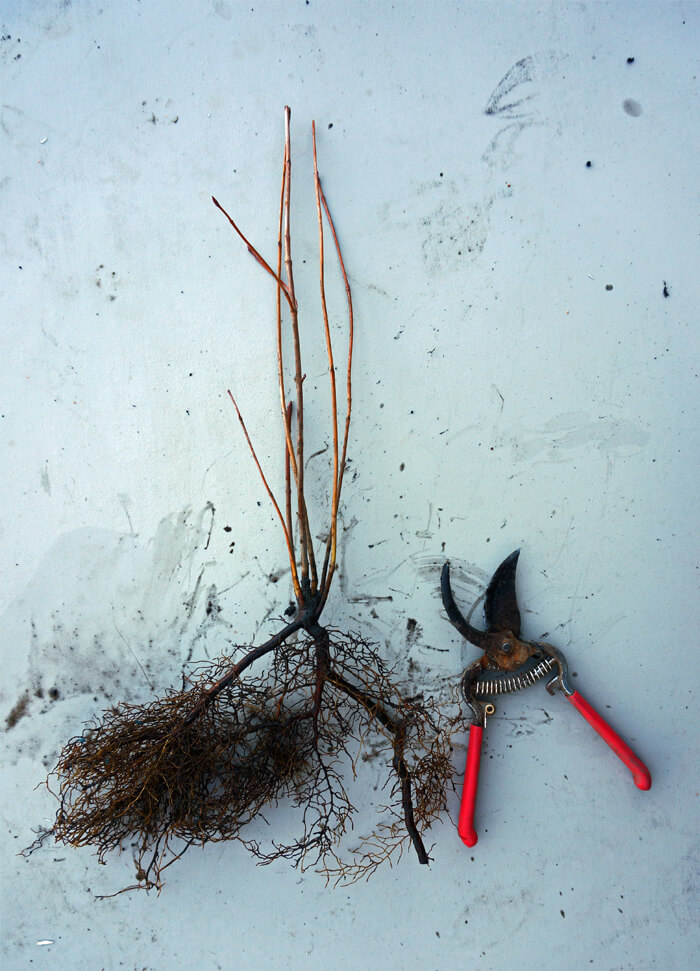 Shrubs (Weigela, Hydrangea, Viburnum, etc.) are pruned to 18 inches tall and root pruned one last time 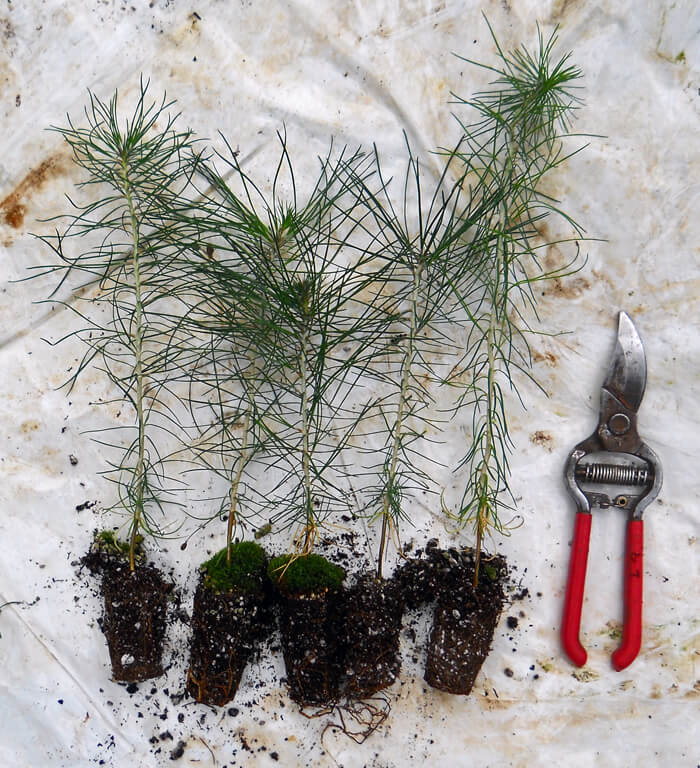 Small plug size Bamboo Plants Are Shipped In Their ContainersBamboo roots are not flexible and so plants have to be shipped in their containers. These plants are heavier and are shipped separately from bare root plants. Because they are potted they can handle longer transit times so can ship via UPS Ground instead of USPS Air Mail. Potted plants can also be shipped year-round.We regularly top our 1 gallon bamboo plants at 24-30 inches tall throughout the growing season. This results in dense, bushy foliage while allowing for economical shipping. From this size most running species will grow to 5-6 feet tall in the first spring and clumping species will usually grow to 4-5 feet tall.  1 gallon bamboo plants strapped in and ready to be sealed. Unpacking Bare Root PlantsYou will be sent tracking details as soon as your plants are shipped. Unpack your plants as quickly as possible after they are delivered. We use two types of boxes, side-sealing and top-sealing. For boxes that are taped along the whole length you can cut the tape on either side and remove the plant bundles by cutting the tape holding the bundle to the bottom. For boxes that are sealed on the top and bottom, it is easiet to open the bottom of the box (the shipping label is at the top) and pull the bundle of plants out straight out. Check that the box is empty as there can be a second bundle of plants stuck towards the top.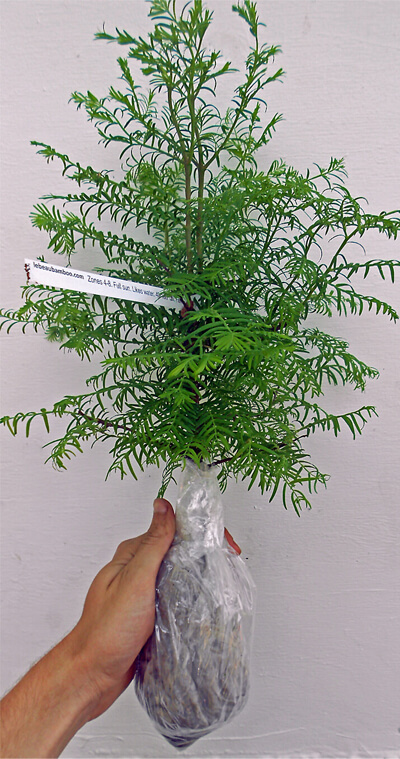 A bundle of trees. What if I am not able to plant right away?You can usually leave the plants in their shipping container unopened for 1-2 days if there were no shipping delays and you have received your plants from late November through February. Plants shipped when it is warmer can't stay in their packages for as long. |
Size Availability
Out of season.
Our main crop of most plants is available starting in late fall.
Additional batches of plugs and quarts are usually added in May.
Many of our plants are propagated in limited quantities and can sell out quickly when posted, get on the notification list below so you don't miss out. Add your email to be notified as soon as we have them back in stock:
This does NOT subscribe your email to any mailing lists, our system will only send an inventory notification message.
|

